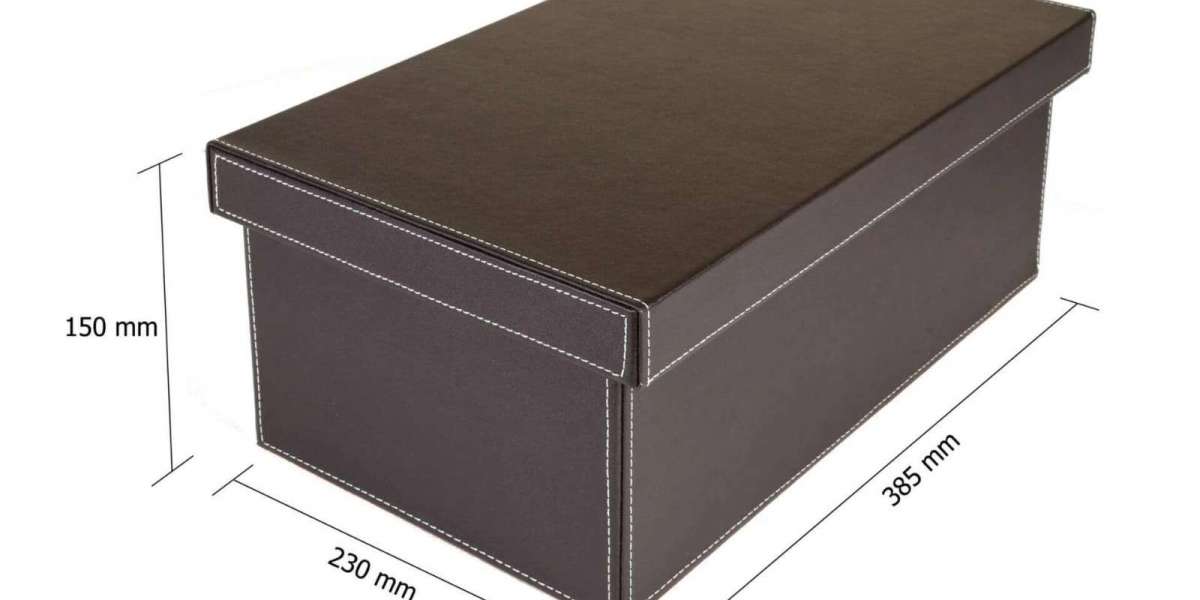Shoe boxes are an essential part of storing and protecting footwear, whether for retail packaging, shipping, or organizing your personal collection. Understanding the dimensions of a shoe box is important to ensure the proper storage of shoes, preventing damage, and maximizing space. In this comprehensive guide, we will explore the standard shoe box dimensions, average sizes, and how different types of shoes impact box sizing.
Standard Shoe Box Dimensions
A standard shoe box is designed to fit the majority of adult shoes and has a typical set of dimensions that range across different shoe brands. The most common dimensions for a standard shoe box are:
Length: 13-14 inches (33-36 cm)
Width: 8-9 inches (20-23 cm)
Height: 4-6 inches (10-15 cm)
These dimensions are intended to accommodate most types of shoes like sneakers, flats, and casual shoes, and they are generally suitable for adult shoe sizes ranging from 6 to 12 (US sizes). The design of these boxes also provides enough room for a shoe with some space for additional packaging materials like tissue paper to prevent shifting during storage or transport.
Variations in Shoe Box Size
While the standard shoe box dimensions fit most footwear, certain shoes may require slightly different box sizes. The shape and style of the shoes dictate how large or small a box needs to be. For instance, high-heeled shoes, boots, or bulky sneakers often require larger or specialized boxes.
Sneakers and Casual Shoes
Sneakers and casual shoes usually fit perfectly into the standard shoe box, which is why many manufacturers use this size. For adult sizes, the dimensions for a sneaker box tend to be:
Length: 13.5 inches (34 cm)
Width: 8.5 inches (21.5 cm)
Height: 5 inches (12.7 cm)
However, for oversized or high-top sneakers, such as basketball shoes or skate shoes, the box size might increase to accommodate their bulk. High-tops generally require a box with a height of 6 inches (15 cm), as they are taller and need additional space to avoid crushing or bending.
Boots and Heeled Shoes
Boots, particularly tall winter boots or knee-high boots, require significantly larger boxes due to their height. These boots often need a box with a length of about 15 inches (38 cm), width of 9.5 inches (24 cm), and height of 6 inches (15 cm). This larger box size ensures that the boots don’t become damaged during shipping or storage.
Similarly, high-heeled shoes or dress shoes might require slightly smaller boxes, often around 12 inches (30 cm) in length, 7.5 inches (19 cm) in width, and 4 inches (10 cm) in height. These shoes are usually narrower and more compact, meaning they don’t need as much room as sneakers or boots.
Children’s Shoes
Children’s shoe boxes are generally smaller to accommodate the smaller foot sizes of kids. These boxes usually measure between:
Length: 8 to 11 inches (20-28 cm)
Width: 6 to 7 inches (15-18 cm)
Height: 3 to 4 inches (7.5-10 cm)
Because children's shoes are more compact and don’t require as much space, these boxes allow for easier storage and organization, especially when keeping multiple pairs for different seasons.
Why Shoe Box Dimensions Matter
Choosing the correct dimensions of a shoe box is critical for several reasons. Firstly, it protects the shoes from damage. Shoes that are packed in boxes that are too small may become misshapen or damaged during transit or long-term storage. On the other hand, if the box is too large, the shoes might shift inside, causing scuffs, scratches, or creases.
Properly sized boxes are also important for maximizing storage space. In closets, under the bed, or in storage units, shoe boxes that are too large can waste space, while boxes that are too small might make it harder to organize shoes effectively. The right dimensions ensure a snug but not cramped fit for your shoes, allowing for efficient storage and easy access.
Choosing the Right Shoe Box
When selecting the right shoe box for your needs, several factors come into play. Consider the following to ensure that your shoes remain in optimal condition:
Shoe Type
Different shoe styles, such as sneakers, boots, and dress shoes, require different box sizes. Be sure to choose a box that accommodates the shape and size of your shoes without causing pressure points or deformation.
Protection
The material of the box also matters. Most shoe boxes are made from cardboard, which is lightweight but sturdy. For added protection, especially when shipping valuable or delicate shoes, you might want to opt for thicker cardboard or even plastic boxes, which offer better durability and moisture resistance.
Stackability
If you're storing shoes in your closet or warehouse, stackable shoe boxes are a great way to save space. Many shoe boxes are designed with grooves or lids that fit snugly, making them easy to stack on top of each other.
Organization
Shoe boxes with clear plastic lids or transparent sides make it easier to identify the shoes inside. This is particularly useful if you're storing shoes long-term or in a location where you need to access them quickly.
Conclusion
In summary, understanding the dimensions of a shoe box is crucial for properly storing, shipping, or organizing your footwear. The standard shoe box size typically ranges between 13 to 14 inches in length, 8 to 9 inches in width, and 4 to 6 inches in height, but it’s important to consider the type and size of the shoes you're dealing with. Different footwear styles, such as sneakers, boots, or children’s shoes, may require larger or smaller boxes to provide the right fit. By choosing the correct shoe box size, you can ensure that your shoes remain well-protected and organized.








